With nearly 700 miles of coastline it’s no wonder there are plenty of castles in Devon and Cornwall. The English nobility of centuries gone by knew you could never be too careful when it comes to protecting an island.
Aside from a string of formidable fortifications overseeing important trading ports, there is also a network of castles inland.
A few are still owned by families who have been linked to them for hundreds of years. Most are now very much in retirement and some are a shadow of their former selves. But there are also places where castle life continues to this day.
Whatever their fate, Devon and Cornwall’s castles are still incredibly atmospheric and some of the most beautiful places in Cornwall. Every ancient stone archway and soaring turret has a story to tell.
Follow in the footsteps of West County nobles and defenders by visiting these castles in Devon and Cornwall.
Find more days out in England, Wales, Scotland and Northern Ireland in my big round up of 101 UK attractions for families.
Contents - jump to what you'd like to know
Okehampton Castle in West Devon
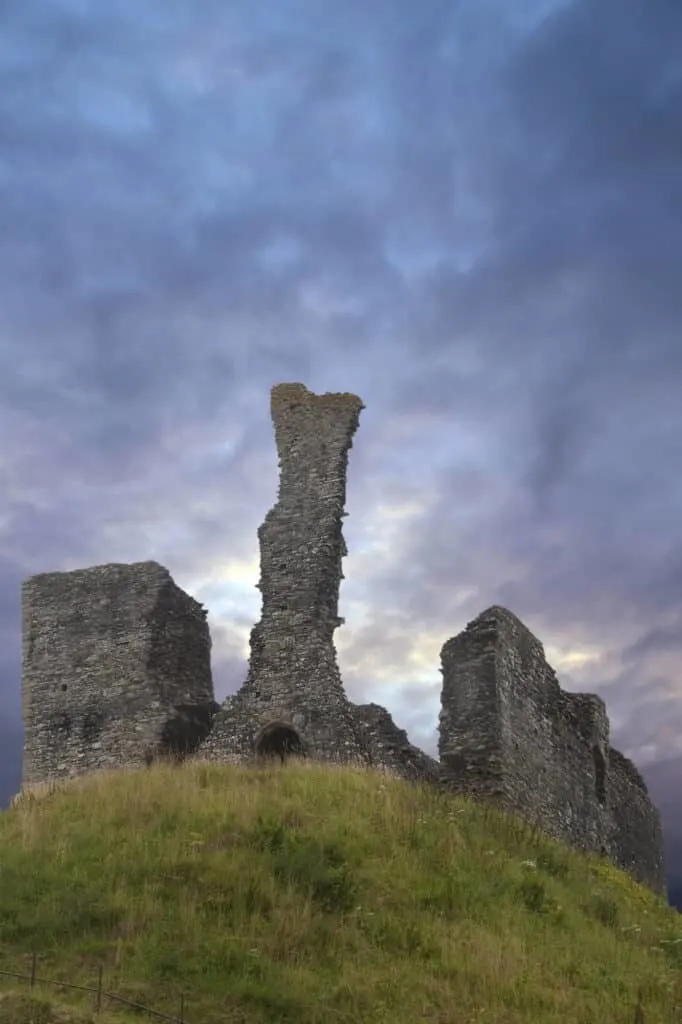
We have William the Conquerer to thank for many of the castles in England. And Okehampton is no exception.
Construction started in 1068 to suppress an uprising in Mid-Devon. The castle went on to became the county’s largest fortress under the ownership of the Courtney family – the Earls of Devon.
Its downfall was at the hands of Henry VIII after Henry Courtney was executed for treason in the 16th Century. This was the beginning of this Devon castle’s decline to ruin.
However, stories of Tudor ghosts and the romantic outline of its crumbling walls have made it a popular place to visit ever since. Notability the artist JMW Turner portrayed the ruin in his works including ‘Okehampton, on the Okement’ (1824), which is now in the Tate Britain.
Find out more about visiting Okehampton Castle in Devon.
Pendennis Castle in Falmouth, Cornwall
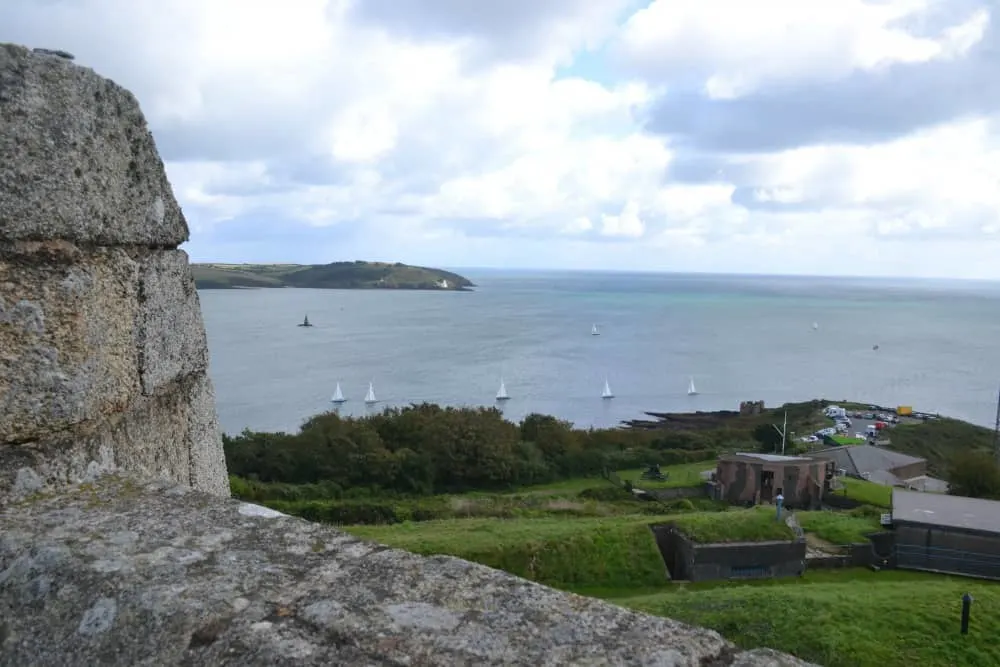
Henry VIII was the next prolific builder of castles to defend his realm. He commissioned Pendennis Castle at Falmouth in response to invasion threats from the continent. It was constructed at the mouth of the River Fal, forming a formidable coastal defence with its twin, St Mawes Castle, on the other side.
Ironically, Pendennis’ fortifications were first tested during the English Civil War of 1646, rather than against foreign foes. It was one of the last strongholds for the forces loyal to King Charles. Layer upon layer of defences were built over the centuries in response to new military threats.
Pendennis’ tunnels, carved into the headland cliffs, and artillery were updated right up until the Second World War. Training continued in the barracks until 1956 when the castle was finally decommissioned.
Today it’s looked after by English Heritage and is an eerie place to visit. If you step inside the cliff top observation station and air raid shelter, it looks like they have only recently been vacated by troops stationed here.
Find out more about visiting Pendennis Castle near Falmouth, Cornwall.
Compton Castle near Paignton
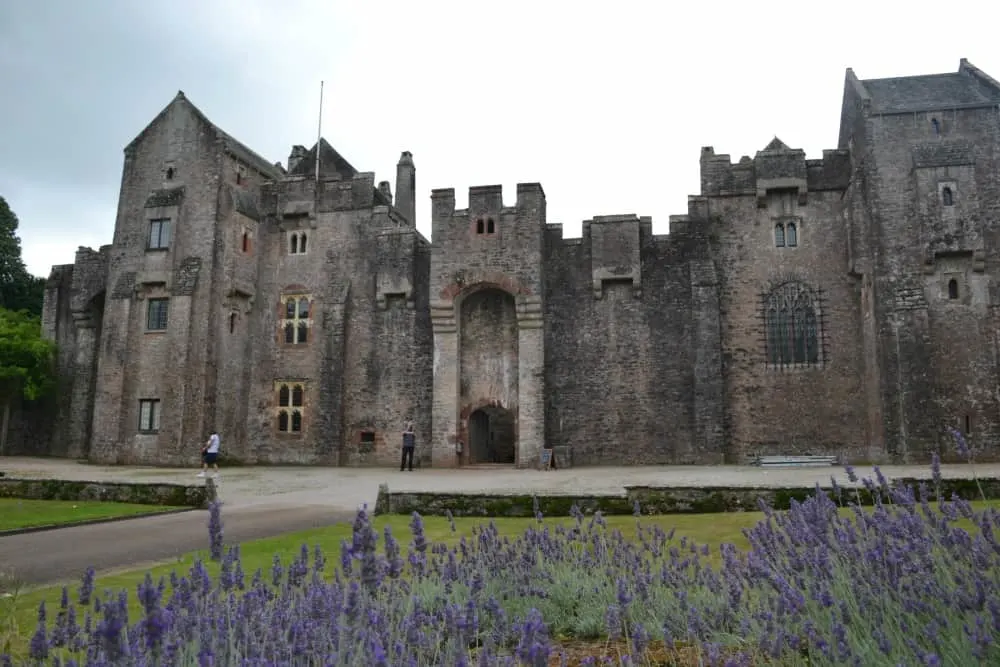
Compton is a Devon Castle still associated with its ancestral owners. It has been home to the Gilbert family for nearly 600 years, including Sir Humphrey Gilbert – half-brother to the English Naval hero and favourite of Elizabeth I, Sir Walter Raleigh.
Compton is three miles from the English Riviera and was originally built as a manor house in the 15th Century. It was soon fortified against the threat of French raids with a high curtain wall, towers and portcullis that remain today. These were never used in anger.
Compton Castle is now looked after by the National Trust and, as the Gilbert family is still in residence, is only open a few months each year. If you time your visit right, you can wander around the medieval kitchen, great hall, solar and sub solar sitting rooms, as well as the formal gardens and orchard.
Find out more about visiting Compton Castle in South Devon.
Powderham Castle near Exeter, Devon

Powderham is another South Devon castle that’s still occupied. It’s the 600-year-old family home of the Earls of Devon after they left Okehampton.
The castle commands stunning views of the Exe Estuary – you can spot it from the railway line from Exeter to Plymouth – and has a rich history stretching back to the 1300s.
There’s been work to adapt this ancient residence for modern living, but you can still find secret doors, incredible marbled halls, winding staircases and opulent sitting rooms.
Powderham is also a fun Devon castle for families to visit, with a small animal farm, a play fort, a deer safari and falconry shows in the school holidays.
Find out more about visiting Powderham Castle near Exeter.
St Michael’s Mount, Marazion in Cornwall

St Michael’s Mount has to be one of Cornwall’s most iconic landmarks, along with Lands End and the Eden Project. It’s also the setting for a well-known fable that everyone will know from their childhood – Jack and the Beanstalk or Jack the Giant Killer.
Legend has it that a giant built the Mount and would wade ashore to feast on the local farmers’ flocks. One day Jack from Marazion, the village opposite St Michael’s Mount, set off to sleigh the giant. He dug a pit half way up the mount and sounded his horn. The giant came running and fell into the hole, which Jack quickly filled.
If you cross the causeway and walk up the cobbled hill towards the castle there’s a heart-shaped stone which, is said to mark the spot when the giant fell.
The castle at the top of St Micheal’s Mount was originally a monastery. If you are wondering if it has links to Mont St Michael in Normandy you’d be right. It was built by the same monks – not the giant.
Today it is the family home of the St Aubyns. There are plenty of historic curiosities inside including a figment of a coat worn by Napoleon at the Battle of Waterloo.
Find out more about visiting St Michael’s Mount in Cornwall.
Want more ideas for family holidays and days out? Read my tips for smashing family travel and sign up for my newsletter.
Totnes Castle in Devon
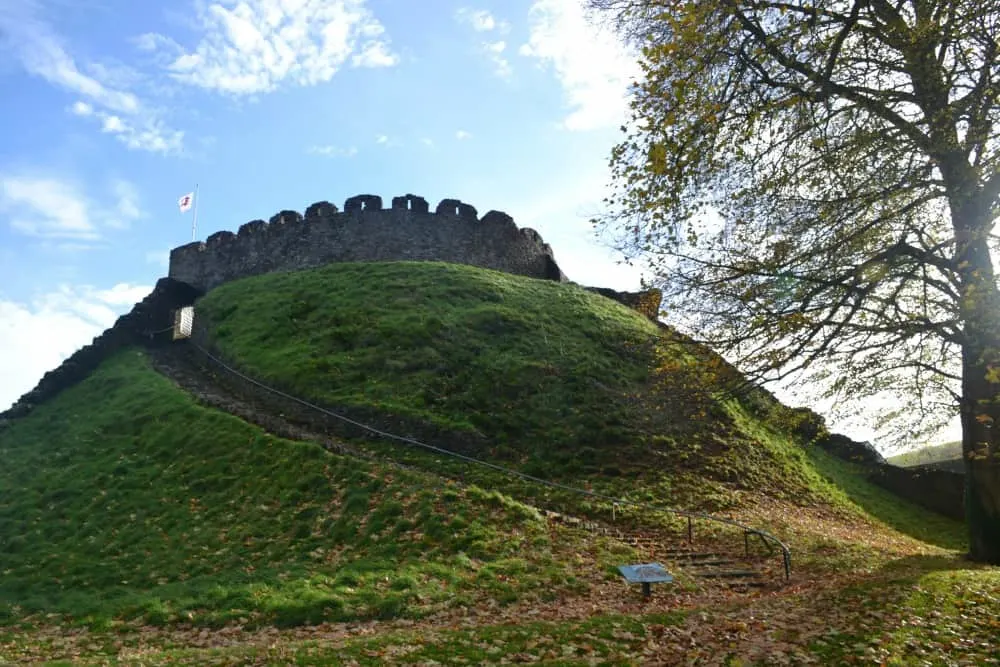
This Castle sits above the bohemian South Devon town of Totnes and dates back to the 11th Century. William the Conquerer originally built it using timber. This was replaced with the stone Bailey you can see today at the turn of the 14th Century.
It’s now one of the best preserved Norman motte and bailey castles in England.
It doesn’t take long to explore Totnes Castle, but is a great addition to wandering around the town’s independent shops and riverside. You can climb the motte, admire the views down the River Dart and picnic in the castle walls.
Find out more about visiting Totnes Castle in Devon.
Tintagel Castle in Cornwall
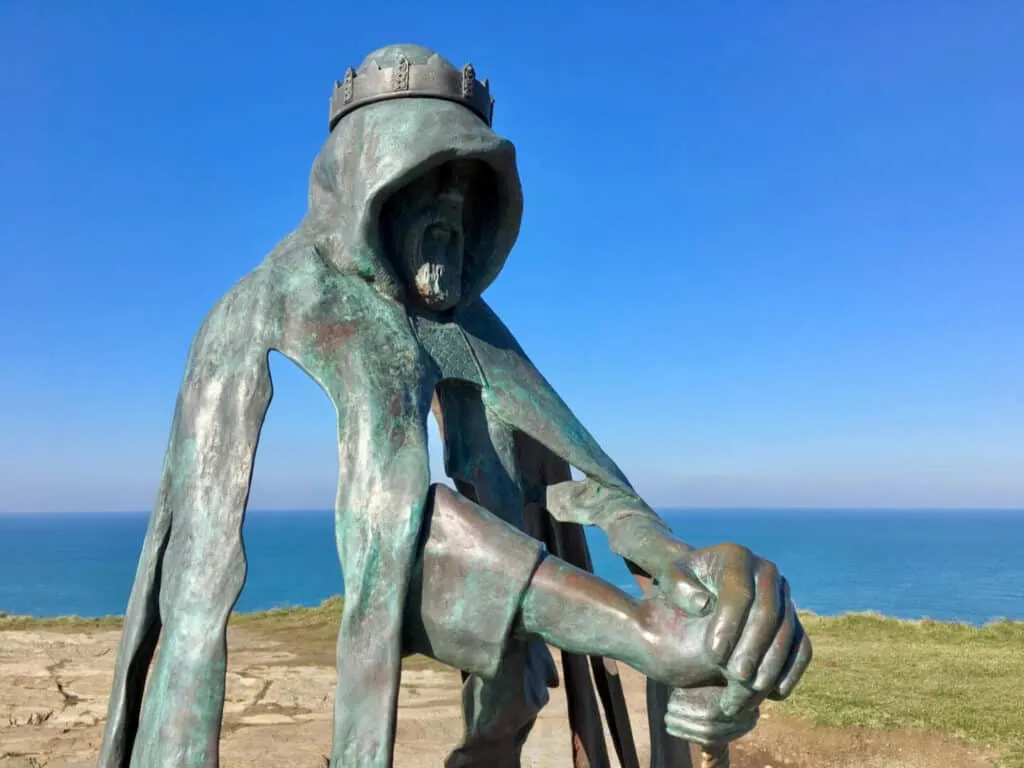
A trip to Cornwall wouldn’t be complete without seeking out one of its most famous legends: King Arthur. It is said he was born at Tintagel Castle, which now stands in ruins on the cliffs of Tintagel Island.
In reality, the castle was built in the 13th Century – well after the supposed reign of King Arthur – but let’s not let facts get in the way of a good fairy tale.
There are however the remains of buildings dating back to the 5th Century when Cornwall’s kings had strong holds here.
A must for any fan of the Arthur legends is a picture with the moody, bronze sculpture that guards the headland.
There’s two routes to reach the island – a foot bridge or a set of steep steps cut into the cliffs. Be prepared for all weathers as the headline is extremely exposed. The pay off is incredible views of the craggy North Cornwall coastline.
Find out more about visiting Tintagel Castle on the north Cornwall coast.
Berry Pomeroy Castle near Totnes in Devon
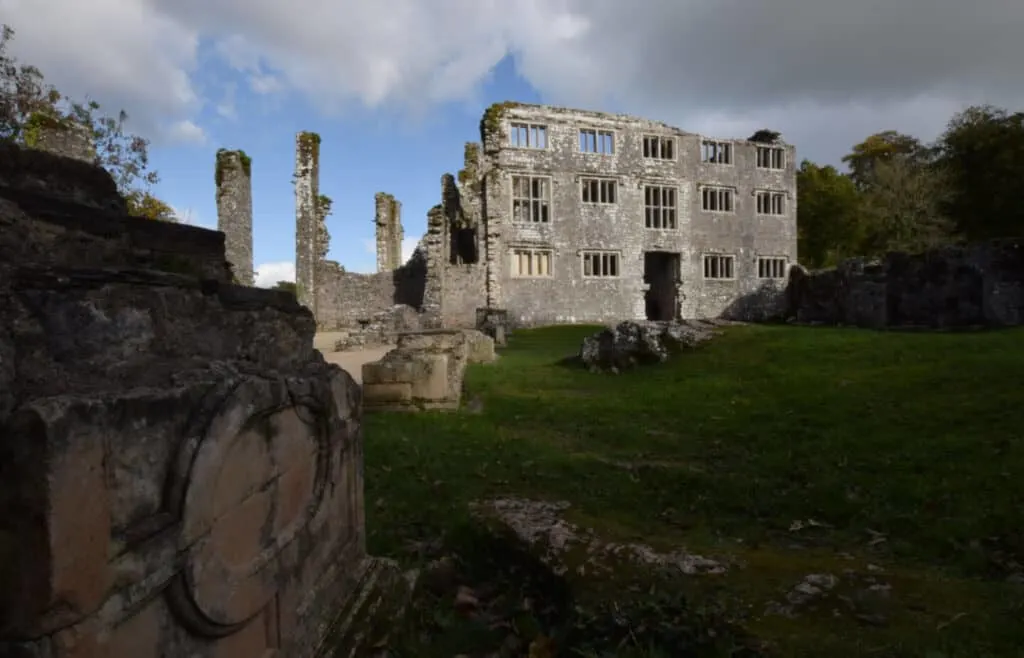
Visit Berry Pomeroy on a misty morning and you’d be forgiven for being spooked. This 15th Century ruin is said to be one of Devon’s most haunted places. There’s an audio tour that tells you all the ghostly tales.
Edward Seymour, Duke of Somerset and Lord Protector to Henry VIII’s only legitimate son, started building an Elizabethan mansion within the castle walls in 1560. The plan was for it to be the grandest in Devon. But it was never completed and was ultimately abandoned by the 18th Century.
Despite now being a ruin, you can still walk through the Great Hall and explore the first floor of the medieval gatehouse where there’s a preserved wall painting. This depicts the three wise men visiting Bethlehem and is thought to have been used as a backdrop for a chapel alter.
Find out more about visiting Berry Pomeroy Castle in Devon.
Dartmouth Castle in South Devon
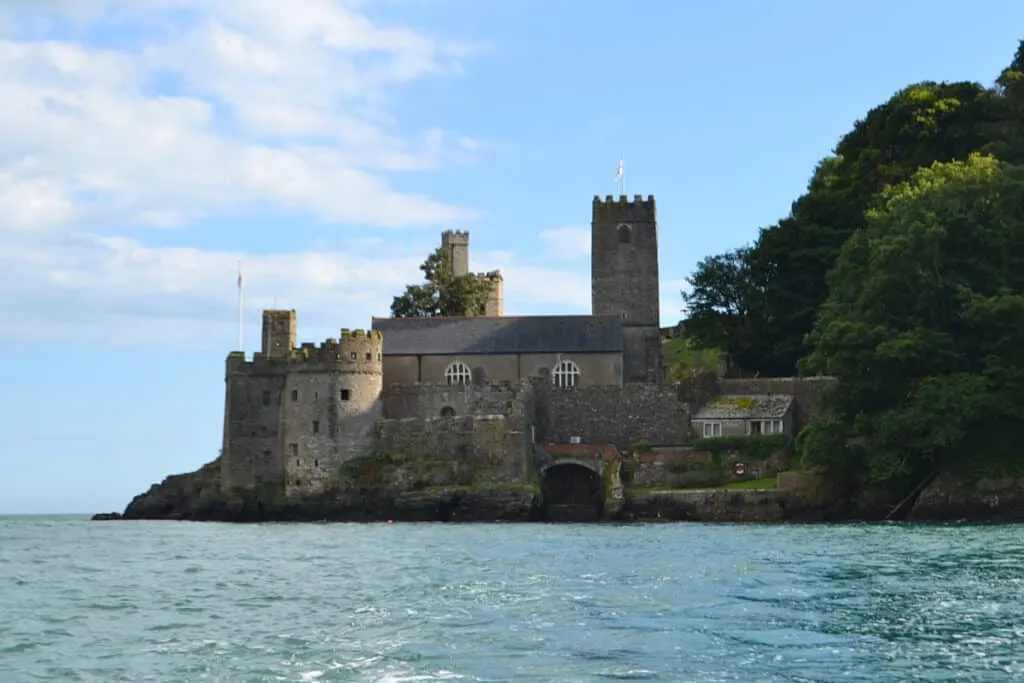
The salty remains of Dartmouth Castle cling to the cliffs above the entrance to the River Dart in South Devon. Unlike many English castles, it has never been home to kings or courtiers. But it has played an important role in protecting the nearby port of Dartmouth since the 14th Century.
Over the centuries, towers and batteries were added to the fortifications. A chain could also be drawn across the river mouth between Dartmouth Castle and Kingswear to stop unwelcome vessels entering.
Today you can visit the castle’s battery, casemates and gun tower where troops were stationed periodically right up until the Second World War.
One of this castle’s very best features are the panoramic views over the sea and down the River. Stand on the top of the gun tower and you’ll be able to see the Britannia Royal Naval College perched on the hill above Dartmouth.
Find out more about visiting Dartmouth Castle.
Caerhays Castle in Cornwall

Caerhays is a relative newcomer when it comes to Cornish castles. It was designed by popular architect John Nash in 1805. The project cost so much that the Trevanion family who commissioned it ran out of cash before it was finished.
Thankfully it was rescued by the Williams family 150 years ago. It has remained in the family and is now a private residence that’s open from mid-February to mid-June.
The castle and 140 acre woodland gardens overlook Porthluney Cove on the south coast. It’s a paradise for horticulturalists with a collection of Chinese plants that were bought here as early as the 1870s.
Find out more about visiting Caerhays Castle in Cornwall.
More places to visit in Devon and Cornwall
If you are interested in more places to visit than castles in Devon and Cornwall then I can recommend checking out my Devon with Kids website and these other posts:
- things to do in Cornwall this summer
- family holidays in Cornwall
- things to do in Cornwall in the rain
- dog-friendly days out in Cornwall
- outdoor places to visit in Cornwall
Want more ideas for family holidays and days out? Read my tips for smashing family travel and sign up for my newsletter.

